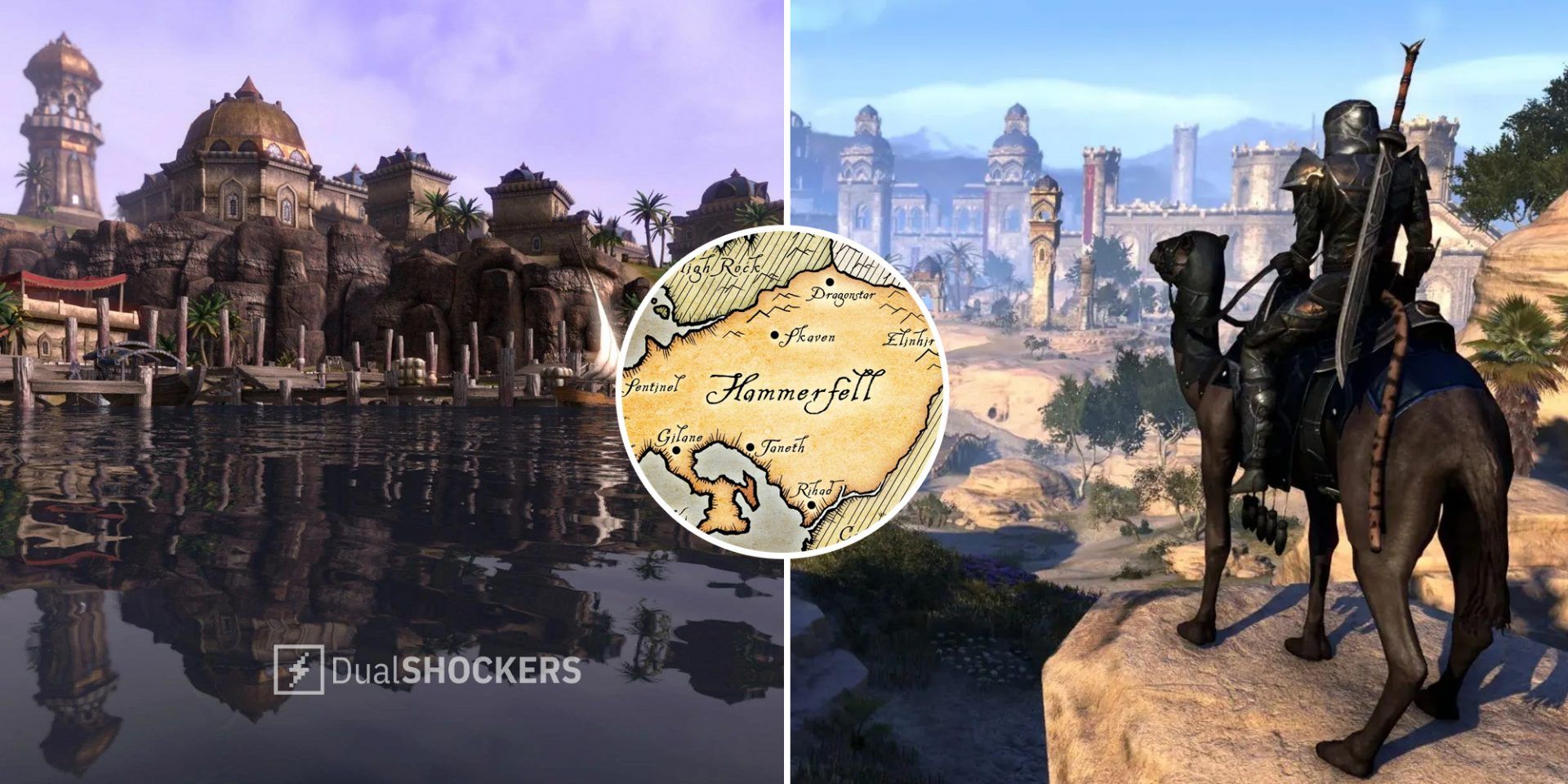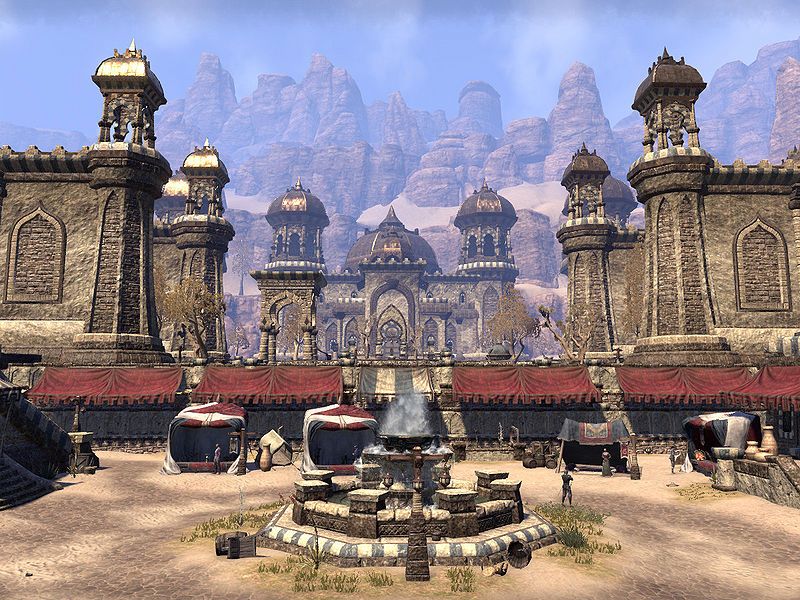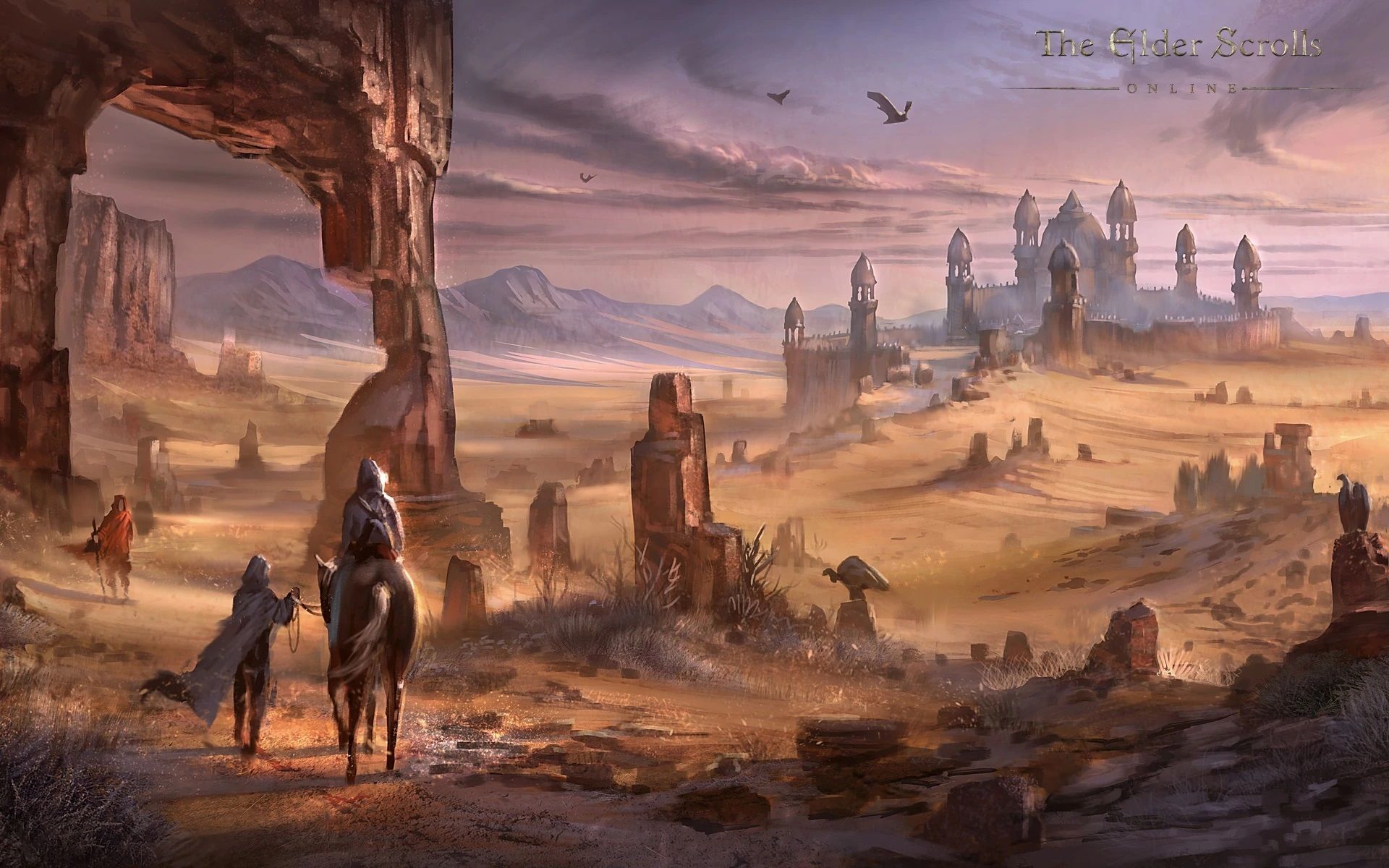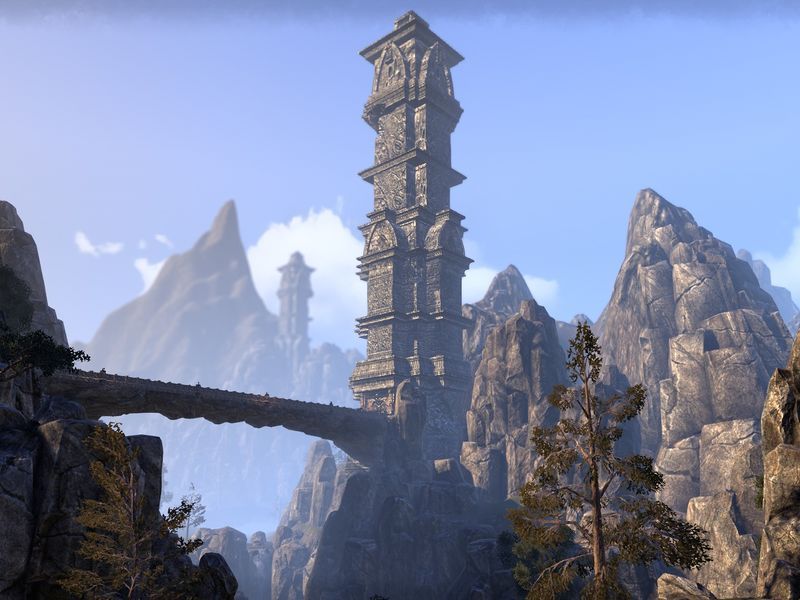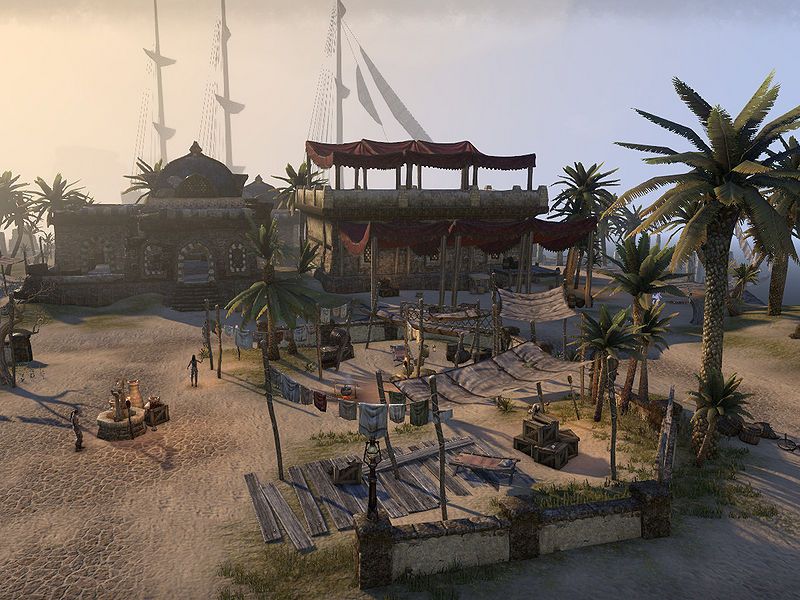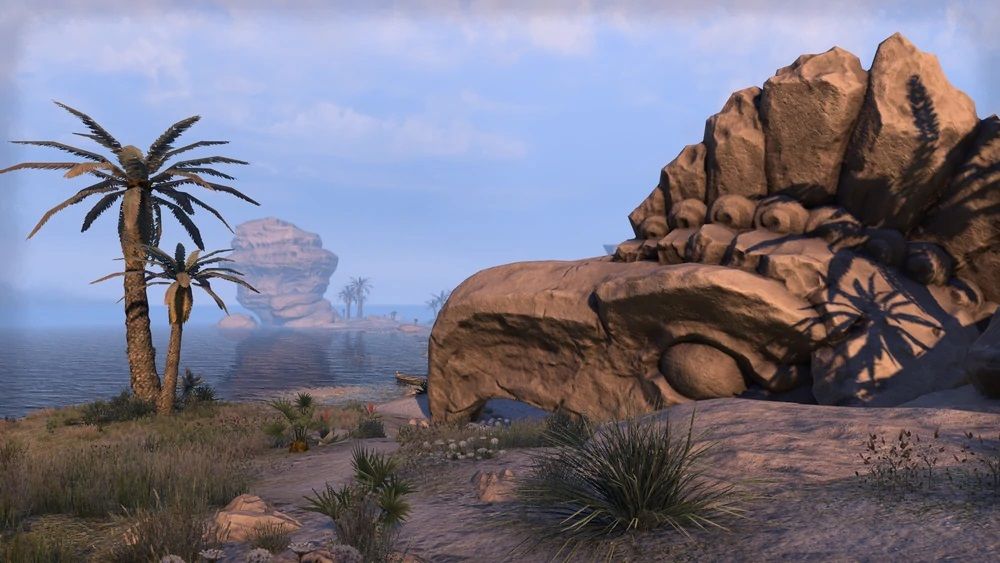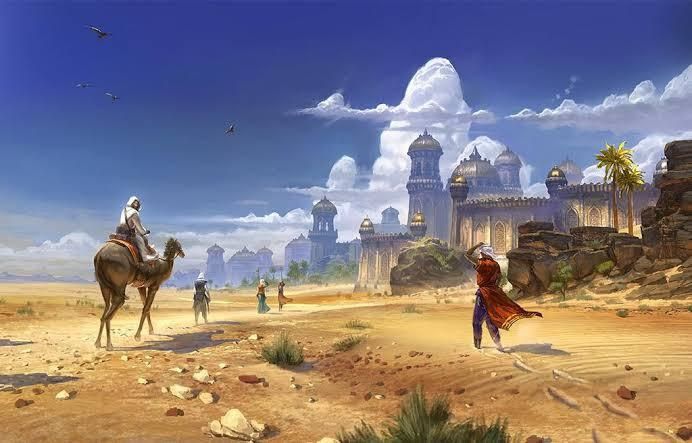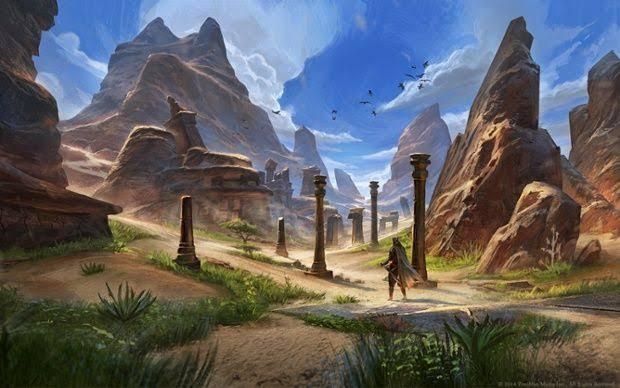We don't know much about the Elder Scrolls 6, with Bethesda keeping a tight lid on information surrounding the game ever since they showed us that teaser a few years ago (as well as that blatant Easter Egg in the Starfield reveal). With that said, the scant details that have trickled through to us suggest quite strongly that the game will take place in High Rock, a region that we've already looked at in detail.
But if the rather persuasive theories are to be believed, then The Elder Scrolls 6 will also expand into High Rock's neighbouring region of Hammerfell, home to the Redguards, and the vast wastes of the Alik'r Desert. Here we're going to take a closer look at Hammerfell - its history and geography - to give you a better idea of what could be in store in The Elder Scrolls 6.
Geography and Regions
Bangkorai
Hallin's Stand In The Elder Scrolls Online
Attentive readers who read our guide to High Rock may notice that we've already mentioned Bangkorai as a part of that region. But this rocky desert region, also known as the Fallen Wastes, stretches from southern High Rock through to northern Hammerfell.
The main city here is Hallin's Stand, an important strategic outpost that has fended off attacks from Reachmen, goblins and Imperials over the years.
Alik'r Desert
Covering a vast portion of western Hammerfell, this desert of rolling dunes and occasional fertile plains spans the entire southern banks of the Iliac Bay, which separates much of Hammerfell from High Rock. Amongst and under its sands lie myriad ruins, and lost cities, such as the Dwemer city of Volenfell and the Montalion necropolis.
The main city here is Sentinel, capital of Hammerfell and seat of the Forebear faction of the Redguards. Not many people live beneath its gold minarets and ornate arches on account of the tough desert environment, but the surrounding fertile fields and a port in the Iliac Bay make it an important hub.
On the southwestern coast of the desert is the city of Hegathe, former capital of Hammerfell and seat of the traditionalist Crowns faction of the Redguards. The strongly fortified desert city is distinct for its gold domes, and is something of a cultural centre with landmarks like the Shrine of Tava and vineyards where the region's specialised wine is made.
Craglorn
The Craglorn region covers northeastern Hammerfell. In its north are the Dragontail Mountains, populated mainly by Redguard and Orcs, which stretch into Skyrim. Lower Craglorn, meanwhile, is a land of mostly dry wastes, and home to the city of Elinhir - the oldest city in the region. Since its heyday in the Second Era, the city eventually declined into a small town on the border between Skyrim and Cyrodiil.
Abecean Sea Islands
Saintsport
The Abecean Sea off the coast of Hammerfell is speckled with myriad tropical islands. The most significant of these is Stros M'Kai, best known for the steam-powered Dwemer ruin of Bthzark in the Ogres Tooth Mountains. The island is surrounded by coral, and is home to the port cities of Port Hunding and Saintsport.
Stros M'Kai is part of several islands known as the Chain. Southwest of those islands is the Thrassian Archipelago, home to the beastfolk of the Sload - an insular sluglike race with history and traditions that are largely alien to the rest of Tamriel's races.
Khefrem
The southwestern coastline of Hammerfell notably has a large peninsula, Hew's Bane, sticking out the bottom of it. The hot peninsula is known for its exotic and unique wildlife, and is home to the port city of Abah's Landing - the founding city of the Tamriel-wide Thieves Guild.
In northern Khefrem lies Gilane, one of the major cities of Tamriel. The most recent records show that the city was left ravaged by a war in 4E 180, when the Redguard retook the city from the Thalmor of the Aldmeri Dominion, a notorious militarist regime based on Elven racial supremacy.
History
Hammerfell is a largely arid region that was originally populated by the Rourken, a Dwemer (Dwarven) clan to whom the land was known as Volenfell (also the name of their capital city). The Dwemer mysteriously vanished from all Tamriel in 1E 700 following the Battle of Red Mountain, leaving behind empty cities and ruins, many of which were buried under the sand.
Nearly a century later, Volenfell was invaded by the Redguards, a predominantly dark-skinned people with a resilience to heat, poison, and other dangers of the desert. The Redguard originate from the continent of Yokuda, which sank into the sea in 1E 792. The first wave of Redguards to sail across the sea to Volenfell from Yokuda became known as the Ra Gada, who immediately began invading local Mer and Nede settlements. After ousting beastfolk from the area, the Ra Gada established the capital of Hegathe on the western shores of Hammerfell in 1E 808.
Eventually, the Redguards became the dominant power in the region, renaming it Hammerfell. Over the years, the Redguard divided into two factions, the Crowns, who sought to retain the traditions of the Na-Totambu government that used to rule the continent of Yokuda, and the Forebears, a more nomadic faction descended from the Ra Gada.
The middle years of the Second Era were shaped by the Interregnum, a period when the central authority of Tamriel collapsed, leading to fractious relations between the myriad kingdoms and alliances of Tamriel. During this time, the Crowns established a hereditary monarchy over Hammerfell, and moved the capital north from Hegathe to Sentinel. This drew the ire of the Forebears, who were begrudgingly subjugated to the new order.
A bloodline of kings ruled Hammerfell throughout the Second Era, ending with the last High King of Hammerfell, Thassad II in 2E 862. The Forebears immediately rose up, taking over the capital city of Sentinel, then fending off the Crowns' retaliation with the help of Emperor Tiber Septim, of the recently established Third Empire. Septim tried to seize this opportunity to tighten the Empire's control over Hammerfell, but rebellions around Hammerfell meant that he had to agree to a peace treaty with the Crowns and Forebears in exchange for keeping Hammerfell an Imperial province.
In 4E 171, following the Oblivion Crisis (charted in The Elder Scrolls IV: Oblivion), the Thalmor of the Aldmeri Dominion invaded Hammerfell, taking advantage of Redguard disunity to seize control of the region. This sparked the Great War, as the Thalmor pushed from Thalmor into Cyrodiil. In a rare show of unity, a Forebear army from Sentinel went to the aid of the besieged Crown city of Hegathe, pushing back the Thalmor in the region.
In 4E 175, the Dominion and Empire signed a peace treaty, the White-Gold Concordat, to end the Great War, but the Redguards rejected the treaty's terms, which would have turned over a large portion of Hammerfell to the Dominion. Subsequently, Hammerfell broke off from the Empire to become an independent nation, and in 4E 180 the newly unified Redguards finally defeated the Dominion, culminating in the Second Treaty of Stros M'Kai.
Hammerfell came out of the conflict an independent nation, its two Redguard factions largely unified. However, the wounds from the war would take a long time to heal…

